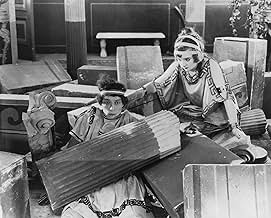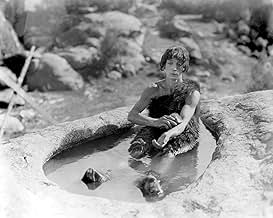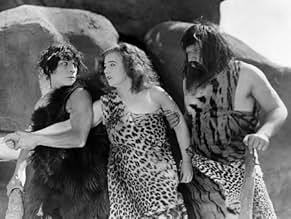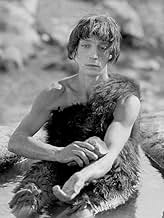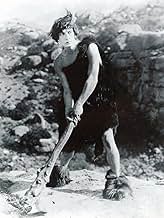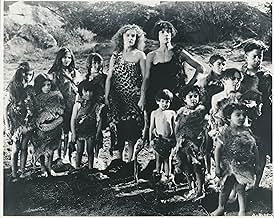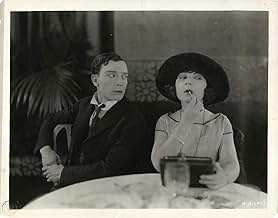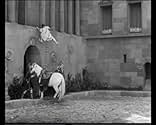VALUTAZIONE IMDb
7,0/10
5615
LA TUA VALUTAZIONE
Aggiungi una trama nella tua linguaThe misadventures of Buster in three separate historical periods.The misadventures of Buster in three separate historical periods.The misadventures of Buster in three separate historical periods.
- Regia
- Sceneggiatura
- Star
- Premi
- 1 candidatura in totale
Kewpie Morgan
- The Emperor
- (as Horace Morgan)
- …
Lionel Belmore
- Undetermined Role
- (partecipazione non confermata)
- (non citato nei titoli originali)
Bernard Berger
- Roman-age child
- (non citato nei titoli originali)
Basil Bookasta
- Stone Age Child
- (non citato nei titoli originali)
George Bookasta
- Stone Age Child
- (non citato nei titoli originali)
George Davis
- Roman Guard Knocked Down
- (non citato nei titoli originali)
Louise Emmons
- Old Fortune Teller
- (non citato nei titoli originali)
F.F. Guenste
- Butler
- (non citato nei titoli originali)
Blanche Payson
- The Amazon
- (non citato nei titoli originali)
Recensioni in evidenza
For me, Keaton's decision to make a parody of Griffith's Intolerance so that if the feature (his first) failed he could re-edit and release it as three two-reelers is what diminishes the enjoyment for me. The film jumps back and forth between the three time periods, and so all of them seem to be over before they've really begun, and the film has something of a disjointed feel. Perhaps this is because the film does actually feel as if it is three two-reelers spliced together rather than an actual feature.
The comedy is unevenly paced, but when it hits the mark it is near-perfect. Highlights include Keaton's drunken encounter with Wallace Beery, other diners, and a crab at a restaurant, and the jaw-dropping leap from one roof to another at what looks like hundreds of feet above the ground (apparently the buildings were short sets placed on a bridge overlooking a view of Los Angeles. Just as well, because Keaton failed to make the leap successfully and fell from the second building, a real-life mishap that remains in the film). Keaton slides through a window, across a room, down a pole (at this point we realise he is in a fire station although he doesn't) and lands on the back of a fire engine that returns him to the police station from which he has just escaped. The whole sequence is both side-splitting and astounding. The look on Keaton's face as he looks quizzically up at the pole he has just descended is priceless. Perhaps because of his status as a comic genius we tend to forget how good an actor Keaton was .
I liked the modern sequence best, and had it been released as a short I believe it would be considered one of his classics. The caveman sequence is OK, but the Roman era story tends to drag.
It's been well publicised that this was competition winner Margaret Leahy's only film because she was so untalented as an actress, and it's true she doesn't light any fires while on-screen. But the impact of her ineptitude in front of the camera is cleverly avoided by the likes of Keaton and Beery merely acting around her as if she were just another prop.
Overall, this isn't one of Keaton's best - although that is probably because this is his first feature. Keaton himself thought it was just OK and, given his instinctive sense for what works, perhaps that should tell us all we need to know...
The comedy is unevenly paced, but when it hits the mark it is near-perfect. Highlights include Keaton's drunken encounter with Wallace Beery, other diners, and a crab at a restaurant, and the jaw-dropping leap from one roof to another at what looks like hundreds of feet above the ground (apparently the buildings were short sets placed on a bridge overlooking a view of Los Angeles. Just as well, because Keaton failed to make the leap successfully and fell from the second building, a real-life mishap that remains in the film). Keaton slides through a window, across a room, down a pole (at this point we realise he is in a fire station although he doesn't) and lands on the back of a fire engine that returns him to the police station from which he has just escaped. The whole sequence is both side-splitting and astounding. The look on Keaton's face as he looks quizzically up at the pole he has just descended is priceless. Perhaps because of his status as a comic genius we tend to forget how good an actor Keaton was .
I liked the modern sequence best, and had it been released as a short I believe it would be considered one of his classics. The caveman sequence is OK, but the Roman era story tends to drag.
It's been well publicised that this was competition winner Margaret Leahy's only film because she was so untalented as an actress, and it's true she doesn't light any fires while on-screen. But the impact of her ineptitude in front of the camera is cleverly avoided by the likes of Keaton and Beery merely acting around her as if she were just another prop.
Overall, this isn't one of Keaton's best - although that is probably because this is his first feature. Keaton himself thought it was just OK and, given his instinctive sense for what works, perhaps that should tell us all we need to know...
D.W. Griffith could have made any movie he wanted to after the enormous financial success of "The Birth of a Nation"; he chose to make the most technically ambitious film to that date, "Intolerance". He took a risk with such innovations in film montage and form, and the well-known financial train wreck resulted. Buster Keaton doesn't take that kind of a risk with "Three Ages", a parody of "Intolerance". This is Keaton's first feature-length film of his own (he only acted in "The Saphead"). He had the fallback plan of dividing the three episodes in this feature into three separate shorts, which Griffith did do with "Intolerance". Keaton didn't have to. Chaplin had already succeeded with feature-length comedies, so if Keaton was taking a risk here, it was completely calculated.
Chaplin had already done a parody of another film, too, with "Burlesque on Carmen" (1915). Keaton appears to allude to that parody, as well. The wrestling scene in the Ancient Rome episode references the swordfight that turns into a wrestling match in Chaplin's burlesque. The comical distance from the plot of both scenes is the same, too. Furthermore, Chaplin's film imitated the glossy style of DeMille's "Carmen", and Chaplin's film seemed a tribute to that film. Keaton doesn't attempt the radical editing, narrative structure or monumental nature in his parody, but it seems respectful of "Intolerance" nonetheless. At least, the stories aren't told completely straightforward as in other "Intolerance"-inspired works, such as Dreyer's "Leaves from Satan's Book" (Blade af Satans bog, 1921) and Fritz Lang's "Destiny" (Der Müde Tod, 1921). There is some mild jumping back and forth between episodes.
Where Keaton did take risks, however, is in his physical, daredevil comedy. That's Keaton unintentionally failing to jump across buildings in the modern episode. Reportedly, he was convinced to alter the scene rather than attempt the jump again. And, it wasn't just Keaton who took risks; the anachronistic baseball gag, for example, was rather dangerous. Thus, although in a different way, Keaton, like Griffith, took risks with his big film. And, I think they both succeeded.
Chaplin had already done a parody of another film, too, with "Burlesque on Carmen" (1915). Keaton appears to allude to that parody, as well. The wrestling scene in the Ancient Rome episode references the swordfight that turns into a wrestling match in Chaplin's burlesque. The comical distance from the plot of both scenes is the same, too. Furthermore, Chaplin's film imitated the glossy style of DeMille's "Carmen", and Chaplin's film seemed a tribute to that film. Keaton doesn't attempt the radical editing, narrative structure or monumental nature in his parody, but it seems respectful of "Intolerance" nonetheless. At least, the stories aren't told completely straightforward as in other "Intolerance"-inspired works, such as Dreyer's "Leaves from Satan's Book" (Blade af Satans bog, 1921) and Fritz Lang's "Destiny" (Der Müde Tod, 1921). There is some mild jumping back and forth between episodes.
Where Keaton did take risks, however, is in his physical, daredevil comedy. That's Keaton unintentionally failing to jump across buildings in the modern episode. Reportedly, he was convinced to alter the scene rather than attempt the jump again. And, it wasn't just Keaton who took risks; the anachronistic baseball gag, for example, was rather dangerous. Thus, although in a different way, Keaton, like Griffith, took risks with his big film. And, I think they both succeeded.
Loosely intended as a satire of D.W. Griffith's Intolerance, The Three Ages was Buster Keaton's first attempt at a full length comedy feature. The only similarities to Intolerance are the opening "book" scene and the fact that similar stories through the ages are edited together into a complete film. Keaton's reasoning for appropriating this style was that if it didn't succeed as a feature film, it could be reduced to three two-reelers. Fortunately, The Three Ages succeeds brilliantly as a comedy and contains some of the funniest routines I've seen in any of Keaton's film. There is nothing unique or daring about the story lines. They are simple boy-meets-girl, boy-loses-girl, boy-gets-girl plots, but the period satires are riotous and set the standard for future works by Mel Brooks and all films of this genre. However, I don't believe that anyone has ever topped this comedy. No one can play the lovable goof like Keaton and the stunts in this film are some of his best. In addition, Wallace Beery's appearance as Keaton's rival adds to this film's appeal. Anyone who thinks that comedy from the 1920's cannot be appreciated by modern audiences needs to see this movie.
"The Three Ages," Buster Keaton's first feature-length film after a number of comedy shorts, is his parody of Griffith's "Intolerance." Keaton tells three parallel stories about the perils of romance, one set in the Stone Age, one during the Roman Empire, and one during the 20th century.
In the context of Keaton, I don't see "The Three Ages" given a lot of mention. This is a shame, since while it's not Keaton's finest work, it ranks with his funniest. In one scene, Buster falls into a pit with a lion. Afraid of getting eaten, he pampers the lion and gives it a manicure. What follows is one of the funniest visual gags I've ever seen.
In the context of Keaton, I don't see "The Three Ages" given a lot of mention. This is a shame, since while it's not Keaton's finest work, it ranks with his funniest. In one scene, Buster falls into a pit with a lion. Afraid of getting eaten, he pampers the lion and gives it a manicure. What follows is one of the funniest visual gags I've ever seen.
Buster presents love stories from three periods in history - the Stone Age, the Roman Age, and the Modern Age. In each, he vies for the affection of a young woman with another man, thus illustrating that emotions like love and jealousy have been constant for time immemorial, a contrast to what D. W. Griffith was trying to highlight in Intolerance, which Buster was parodying.
While the three stories are interleaved together, it's notable that at a 63 minute runtime, this is essentially three two-reel shorts put together. As Keaton put it, "Cut the film apart and then splice up the three periods, each one separately, and you will have three complete two-reel films."
The Stone Age story has lots of gags that The Flintstones would later borrow, such as prehistoric golfing, taking dictation by chiseling into a stone, and presenting a business card comprised of a small slab of rock with a crude likeness drawn on it. Buster standing atop a dinosaur, despite the bad science and primitive stop-motion effects, made me smile. The best moment, however, was when he tries to arouse jealousy in his beloved by attempting to grab another woman by the hair and take charge of her, only to find she's at least a foot taller than him. She knocks him off the rock and we get that marvelous shot of him look up into the camera on the way down to a pond below, kissing his fingers before spreading his arms wide.
The Roman Age story has a lot of the same types of visual gags, like a wristwatch made with a sundial, Buster playing an impromptu game of craps with dice with Roman numerals on the sides, and him pulling his chariot up to a "No parking" sign in Latin (naturally, mistranslating Non Postum Exit). The best gag was when he engages in a chariot race in the hippodrome using one pulled by dogs. When one starts slowing down, he replaces it like a spare tire with another that's stashed in his trunk, which was hilarious.
The Modern Age of "speed, need, and greed" features some amusing moments on the gridiron, like Buster being propped up by an opponent so he can be knocked down each play, and handing the ball off when he's about to be creamed on a punt return. There's also a clever getaway shot from above where he goes through one taxi to another faced in the opposite direction, and when the two cabs drive off, his pursuers think he's in the first. Nothing tops that extraordinary leap from one building to another, however, where Buster missed the jump in real life. While there was a safety net 35 feet below him, he hit it hard and awkwardly enough that he injured his knees, hips, and elbows, and had to stay in bed for several days afterwards. How he then improvised the awnings and slid into the fire department was brilliant, and "the biggest laughing sequence in the picture...because I missed it in the original trick," as he put it.
Overall the film wasn't helped by being so drawn out as the pace of the jokes probably could have been faster, but there's a lot to like here. Pretty cute ending too.
While the three stories are interleaved together, it's notable that at a 63 minute runtime, this is essentially three two-reel shorts put together. As Keaton put it, "Cut the film apart and then splice up the three periods, each one separately, and you will have three complete two-reel films."
The Stone Age story has lots of gags that The Flintstones would later borrow, such as prehistoric golfing, taking dictation by chiseling into a stone, and presenting a business card comprised of a small slab of rock with a crude likeness drawn on it. Buster standing atop a dinosaur, despite the bad science and primitive stop-motion effects, made me smile. The best moment, however, was when he tries to arouse jealousy in his beloved by attempting to grab another woman by the hair and take charge of her, only to find she's at least a foot taller than him. She knocks him off the rock and we get that marvelous shot of him look up into the camera on the way down to a pond below, kissing his fingers before spreading his arms wide.
The Roman Age story has a lot of the same types of visual gags, like a wristwatch made with a sundial, Buster playing an impromptu game of craps with dice with Roman numerals on the sides, and him pulling his chariot up to a "No parking" sign in Latin (naturally, mistranslating Non Postum Exit). The best gag was when he engages in a chariot race in the hippodrome using one pulled by dogs. When one starts slowing down, he replaces it like a spare tire with another that's stashed in his trunk, which was hilarious.
The Modern Age of "speed, need, and greed" features some amusing moments on the gridiron, like Buster being propped up by an opponent so he can be knocked down each play, and handing the ball off when he's about to be creamed on a punt return. There's also a clever getaway shot from above where he goes through one taxi to another faced in the opposite direction, and when the two cabs drive off, his pursuers think he's in the first. Nothing tops that extraordinary leap from one building to another, however, where Buster missed the jump in real life. While there was a safety net 35 feet below him, he hit it hard and awkwardly enough that he injured his knees, hips, and elbows, and had to stay in bed for several days afterwards. How he then improvised the awnings and slid into the fire department was brilliant, and "the biggest laughing sequence in the picture...because I missed it in the original trick," as he put it.
Overall the film wasn't helped by being so drawn out as the pace of the jokes probably could have been faster, but there's a lot to like here. Pretty cute ending too.
Lo sapevi?
- QuizThe most famous stunt in the movie was actually built around what went wrong with the original stunt. Buster Keaton intended to leap from a board projecting from one building onto the roof of another building, but he fell short, smashing into the brick wall and falling into a net off-screen. He was injured badly enough to be laid up for three days. However, when he saw the film (the camera operators were instructed to always keep filming, no matter what happened), he not only kept the mishap, he built on it, adding the fall through three awnings, the loose downspout that propels him into the firehouse and the slide down the fire pole.
- BlooperIn the medium shot of the Stone Age soothsayer scene, Buster's hands are resting together near the side of the turtle. But in the cut to a close-up, we see only a hand double's right hand, and it's directly in front of the turtle's mouth. (It's clearly a hand double, since Keaton was missing his right index finger tip.)
- Versioni alternativeIn 1995, Film Preservation Associates copyrighted a version with an orchestral score; no details were specified on the print.
- ConnessioniEdited into The Golden Age of Buster Keaton (1979)
I più visti
Accedi per valutare e creare un elenco di titoli salvati per ottenere consigli personalizzati
- How long is Three Ages?Powered by Alexa
Dettagli
- Data di uscita
- Paese di origine
- Lingua
- Celebre anche come
- Three Ages
- Luoghi delle riprese
- Azienda produttrice
- Vedi altri crediti dell’azienda su IMDbPro
Botteghino
- Lordo in tutto il mondo
- 177 USD
- Tempo di esecuzione
- 1h 3min(63 min)
- Colore
- Mix di suoni
- Proporzioni
- 1.33 : 1
Contribuisci a questa pagina
Suggerisci una modifica o aggiungi i contenuti mancanti

